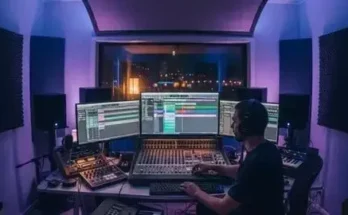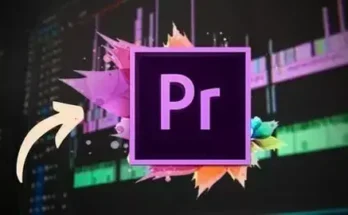Team iLLiTERATE | 20 September 2020 | 1.7 GB
This class is the core of the “Producing Music with Reason” course. building up on what has been taught in section 1, we will produce together a mini music. The objective is to give you the know-how and show you the tools to make one yourself,
By the end of this class, you will be able to fly with your own musical wings!
Video 1: contents of this class
This is what you will learn in this section :
Navigate across the windows and manipulate editing tools,
Get familiar with the rack structure,
Create instruments in the Rack, and apply effects to them,
Record and edit in the sequencer MIDI notes and parameter automations.
Basics of a synth and how to manipulate some of the synth parameters while knowing what you are actually doing,
Basics of drum machine programming,
Using and editing audio samples in the sequencer,
And many other useful things, like shortcuts and tips which are spread around this section.
Video 2: Creating a Beat in Reason
This episode will show you the different options Reason offers you to create beats (audio loops, sliced Rex loops, Kong Drum machine and Redrum drum machine).
We will focus on one specific option to create a basic beat (programming a drum machine, The Redrum) and record it in the sequencer via the Pads of our MIDI controller. Our MIDI recording will allow us to go a little deeper in the editing process and learn some cool editing tips.
Level: Beginner.
Note: This video is not an extensive list of ways to create beats in Reason. There is another powerful option that is not mentioned here but it uses Refills (for example BFD with MIDI clip importation).
Video 3: Sound generation basics + recording a synthbass line
In this video, we will create a bass line using the Subtractor synthesizer. This will give us the opportunity to get introduced to synthesizers. We will briefly describes the basic functions of a synth so that we can generate a sound. We will also do a little theory here by describing how sound can be described as waveforms. We will listen to various waveforms and understand why some can be used for a purpose and some others for another. I will exemplify this by improvising the creation of a jazzy pad. We will then go back to playing, recording and editing a bass line for our music track.
Level: Beginner and intermediate level user.
Video 4: Setting up a pad
This video will show you how to create a background Pad in Reason. We will explore how to browse and load a preset in the Rack. This will give us the opportunity to discover what is a Combinator. This will also allow us to explore functionalities of the rack. We will see how to learn about sound design in the rack from these presets. Moreover, we will learn how to change the sound on the fly in order to suit it to our needs. We will conclude by playing, recording and editing a pad for our little music track.
Level: Beginner and intermediate level user.
Video 5: Recording a melody + file clean up tips
We have now a beat, a bass-line and a background pad. Time to play, record and edit a little melody using the spacey piano sound we created in the first section! During the creative process, it is important to stay organised in order not to hinder the workflow while composing. The second part of this video will share with you some clean-up tips and a few best practices.
Level: Beginner.
Video 6: Sound design a rising woosh (Part 1)
This video and the next introduces you to sound design by creating a rising whoosh sound from scratch. Such sound is often used to announce a change or transition in a song, especially in electro and techno. We will use for this a Thor synthesiser. This first part will share with you the basics of the Thor synthesiser by going through its architecture. We will learn how the sound is generated in the Thor and how it flows in its various modules, as well as what these modules do to it.
We will then learn how to generate a white noise that will be the base of our sound and sculpt it with time to make it rise. In addition, to make it sound flashy and spread across the stereo field we will create a chain of effects by connecting various devices to the channel strip containing the Thor synthesiser.
Level: Intermediate level user.
Video 6 – part 2: Sound design a rising woosh (Part 2)
In this video, we will insert our Whoosh sound in our mini music track. For that, we will sculpt it to our liking by recording in real time synths parameters and the motion of the channel strip fader in the sequencer.
In the process, we will realise that our whoosh doesn’t sound that good, so we will troubleshoot to analyse what is missing and correct it by modifying some synth parameters. We will also add an EQ and a maximiser to the effect chain we created in the previous video.
Level: Intermediate level user.
Video 7: Importing audio in Reason: an ending impact for our music.
In this video, we will import an external audio sample that we will use as final hit for the ending of our music composition. First, we will discuss how and where to find these samples, and the legal implications of using them in a composition. Then we will import an audio sample of a hit, using this example as a good opportunity to get introduced to the basic audio editing tools that are offered in Reason’s sequencer. We will explore this a little further by importing an audio loop of a beat, and replacing our current beat with it, just to hear what it sounds like. This is a great way to explore alternatives and change the feel of a composition drastically.
Level: Beginners and intermediate level user.
[toggle title=”Home page”]https://skl.sh/3iPxRJ5[/toggle]

http://alfalink.to/5e4184fe2297493dc29d
Please REPORT in Comment Broken Links




